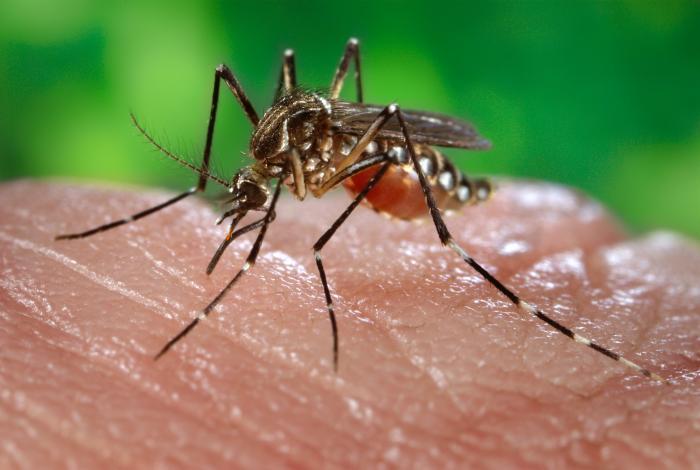Picnics, parades and fireworks are the attributes of a grand July Fourth celebration. So are the itch and scratch of mosquito bites. While the bites are annoying, they don’t tend to stop the festivities. However, certain types of mosquitoes can cause serious harm. They are known to carry and spread diseases like Zika, West Nile Virus and malaria.
One of the tools researchers are using to track these mosquitos is citizen science data combining with NASA Earth satellite observations to create new forecast models that can predict the spread of mosquito-carrying diseases, but more data are needed to improve models that can predict and track mosquito-borne diseases.
“We do not have enough information on the geographic distribution of mosquito and time-variation in their populations. If a lot of people participated in this citizen science initiative worldwide, it will help fill in gaps and that would help our work,” said Assaf Anyamba, a scientist from Universities Space Research Association using satellite data to study mosquitoes at NASA’s Goddard Space Flight Center in Greenbelt, Maryland.
From fall 2017 to spring 2018, two NASA DEVELOP teams at Goddard studied Western Europe, a place not typically known for mosquito disease outbreaks. DEVELOP, part of NASA’s Applied Sciences Program, addresses environmental and public policy issues through interdisciplinary research projects that apply the lens of NASA Earth observations to community concerns around the globe. The Global Mosquito Alert Consortium supplied the DEVELOP teams with citizen science data.
The teams blended the citizen science data with NASA satellite observations of land surface temperatures, humidity, soil moisture, elevation, vegetation and precipitation. The data were then used to create an interactive, open-source map on Google Earth Engine to improve prediction models for disease-carrying mosquitoes. The work is ongoing.
Early results showed that vegetation, humidity and soil moisture made it easier for mosquitoes to thrive during the summer months. During the winter, elevation played a stronger role in creating mosquito-friendly habitats. The lower the altitude, the higher the number of mosquitoes. One challenge with the study was that the citizen science data was concentrated in populated areas; and as a result, it was skewing some of the mosquito results,” said Sara Lubkin, DEVELOP project coordination fellow at Goddard.
More citizen science data from more areas of the world could help.
“Knowing the mosquito species and their approximate populations at a given time provides useful information on the potential of occurrence of a particular pathogen, or disease transmission,” said Anyamba.
Different environmental conditions are suitable for certain types of disease-carrying mosquitoes.
Every summer, hot, humid conditions drive up mosquito populations. Since there are plenty of wet areas to live and breed, mosquitoes tend to stay in one area. However, when conditions become hot and dry, mosquitoes migrate to more suitable habitats.
Satellites can detect how wet or how dry an area is, and that information helps determine what types of mosquitoes and disease can move through an environment.
The last significant West Nile outbreak in the United States occurred in 2011, which was a dry year. The hot, dry season led mosquitoes to move into highly urbanized and populated areas seeking food and water.
Warmer temperatures excite some mosquito species, causing them to bite more people. Also, certain high temperature thresholds can reduce the amount of time it takes for mosquitoes to mature from larvae to adults leading to doubling mosquito populations over an average year.
Mosquitoes cannot travel far on their own. Instead, they have to hitch a ride on people and animals to travel any significant distance. If a mosquito is a type that carries and spreads diseases, then the disease can move into new areas, as occurred in Western Europe.
The public can help track mosquitoes by downloading an app called GLOBE Observer, and then collect data over the summer using the Mosquito Habitat Mapper tool in the app. The app guides users through the process of identifying and eliminating mosquito breeding sites in order to reduce mosquito populations in their local area.
Related links:
- An Interactive Model of Mosquito Presence and Distribution to Assist Vector-Borne Disease Management in Western Europe
- A new report from the National Center for Atmospheric Research evaluates the risk to 50 U.S. cities from the Aedes aegypti mosquito, which carries Zika.
- Global Mosquito Alert Consortium
- NASA Citizen Science App Tackles Mosquito-Borne Disease
By Rani Gran
NASA’s Goddard Space Flight Center, Greenbelt, Md.



























